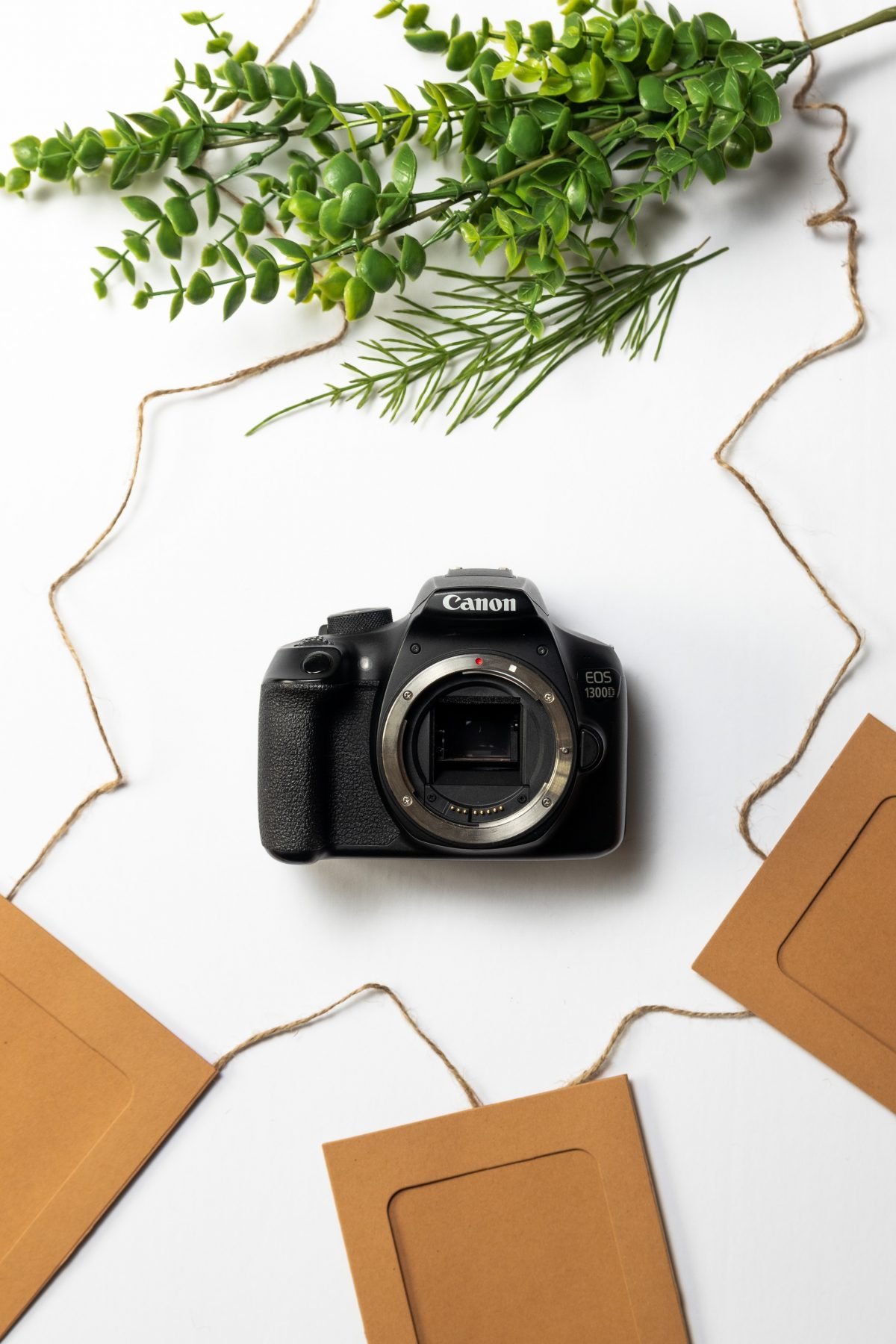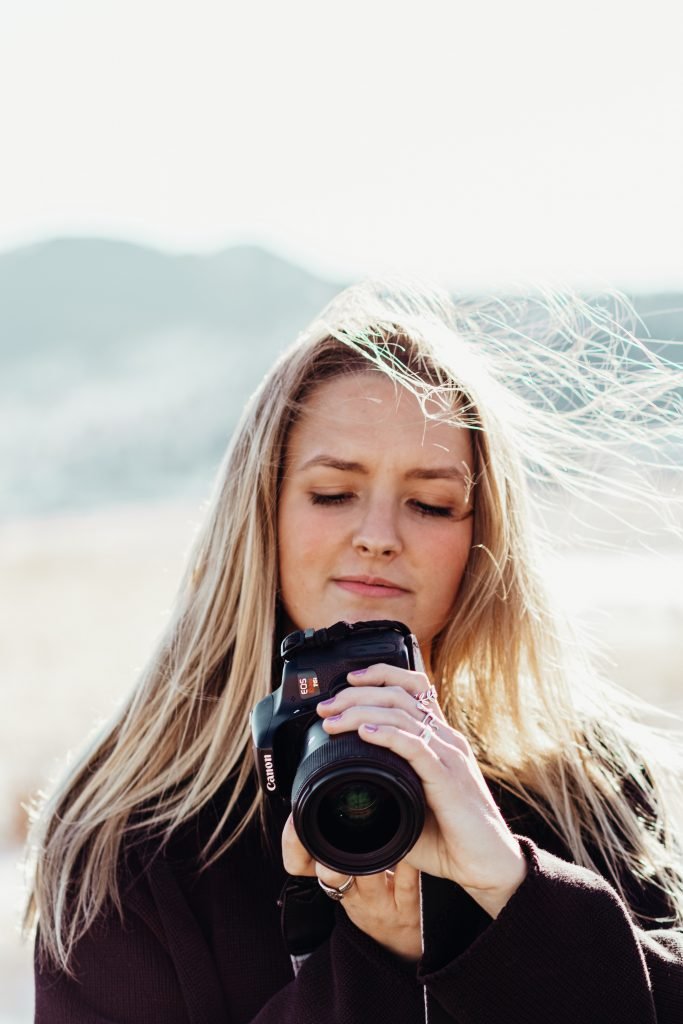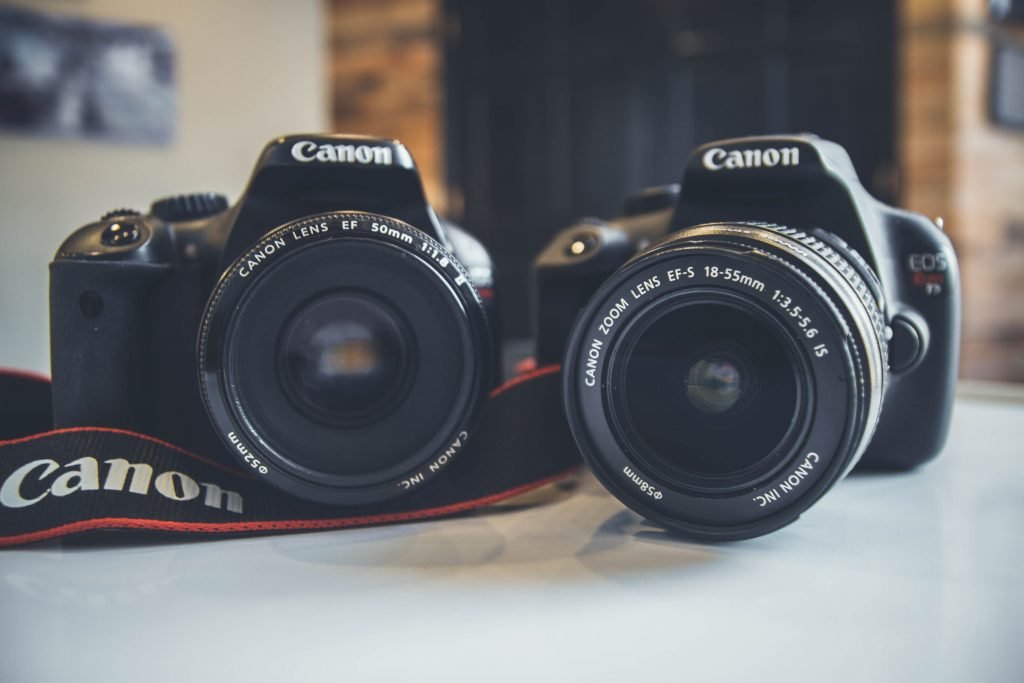
Are you in the market for a new camera, but you want one that will work for both taking great photographs as well as video footage? If so then this post is for you! I’m going to walk you through the pros and cons of purchasing an entry-level (but budget-friendly!) camera, if you want to also use it for video.
Reader question 🌟
I recently received this fantastic question from one of my readers, so wanted to share with you some of the same advice I gave her! If you’d like to join the discussion, or even ask some questions of your own, then come check out our online community where we share tips, tricks, and answer loads of questions just like this.

If you haven’t already, definitely check out my free beginner’s guide to choosing a DSLR camera. There are tons of details to help you decide which features are going to be important for you, a list of several camera options including the model name and current prices, and lastly, an easy checklist you can use to take with you when you go to the store to try out the different camera options!
So, can you have your cake and eat it too? Or in this case, can you get a good budget-friendly camera that can do both photos and videos? The answer is yes, and no…
The bottom line is that *all* DSLR cameras nowadays offer video functionalities. So yes, you 100% can buy an entry-level camera and use it for video. However, and this is a big one: whether that is a good investment totally depends on what types of videos you plan to create. If you want to take the occasional video, use it to make simple family films, and aren’t too concerned about sound quality and super-fast focusing, then these starter cameras are perfectly suitable.
On the other hand, if you want to make slightly more advanced videos using external audio, or even sit-down videos (like for YouTube, for example), then you will almost certainly need to increase your budget (even if it’s just a little bit), or considered buying second-hand to get the price lower. Let’s look at the reasons why!
For video, here is a list of things that you might want to consider.
From the list below, the only things I would really consider “mandatory” for video are:
- a camera
- a decent 50mm 1.8 lens
The other items are things you might want to look at later down the line, once you can invest a bit more.
- A camera that has auto-focus in video (~$400-$700): my first camera did not have this, and it is seriously a must-have. You will struggle to get your subject in focus, and you will often end up with videos with the entire thing out of focus meaning you’ll have to re-record the whole thing. For occasional filming, this is not a deal-breaker. You can focus without autofocus, it’s just not as easy. But if you’re dreaming of becomming a mommy vlogger or YouTuber and will use your camera for video, then this will quickly become a pain.
- A suitable lens (~$100): I use a very inexpensive lens (even though I own more expensive ones!) when filming video. I personally use Canon cameras, and use the Canon 50mm 1.8 lens for video. This lens is extremely versatile, and will be great for both photo and video. If you’re recording videos for YouTube for example, you’ll be able to use this lens to get that blurry background effect, which looks great on camera. If you are on a budget, I honestly would not recommend any other lens besides this one to start out with. Anything else will be too expensive, and you don’t really need anything else at this stage besides the kit lens and a 50mm 1.8. This is something you can totally buy used to make a considerable savings.
- A microphone (~$20): I would not recommend using your camera’s microphone, and would definitely recommend using an external mic. I recommend a lapel mic to start with if you’re filming videos with one person in them, because they have great quality and they are extremely budget friendly. I have a rode mic that sits on top of my camera and my cheap lapel mic has far superior quality! I am personally not a fan of my Rode mic at all. Once you’re ready, you will want to invest in a wireless lapel mic, but a regular wired one that plugs into your camera will be perfect for now.
- Lighting (~$50): This might not fit into your budget, but just keep in mind if you want to film sit-down videos, you might want to start looking at some extra lighting solutions (again, later down the line when you’re ready). I use soft boxes (they’re big lights that have a cover on them to soften the light) even during the day when I’m filming, and they really improve the overall quality of your videos.
- Extra batteries (~$20): If you’ll be filming, then you will want at least one spare battery so you can swap it out when your battery runs out. This will mean you won’t have to sit around waiting for your battery to charge to continue filming! I use generic batteries purchased from Amazon and they are very inexpensive.
- Memory cards (~$15): You can purchase very budget-friendly memory cards, but I personally invest in SanDisk cards. If you plan to do video, I would recommend getting at least two 32Gb or 64Gb cards.
Buying used & second-hand can be a great way to keep costs low
When I was working with a tight budget, I purchased used cameras and accessories from places like Facebook marketplace. I even nabbed a DSLR camera my neighbor was selling in a moving sale for $50 (worked great, came with a kit lens and a bunch of batteries)!! Generally speaking, you will save $100-$200 on a camera if you buy it used vs new.
So, looking at the current prices of new cameras, here are your options (and why you might not want to buy them…). The prices below are in USD but they’re not too different in other markets, and are usually around the $4-500 or £4-500 price point.
- Canon EOS Rebel T7 ($449): this is an excellent starter camera, but it does not have autofocus in video. This fits a tight budget, but it will not be easy for video without this feature. Plus, there is no mic input on this camera either.
- Nikon D3500 ($529): similar to the Canon T7, this is entry-level, and the least expensive Nikon, but the downfall to this one is that it does not have a port for an external mic. So if good sound quality is important to you, then this camera is not a good option. This camera is generally speaking not recommended for people wanting to do video.
Neither of these two cameras have a flip out screen
If you have a tight budget, but you also want to get serious about photography and video, then I don’t think either of these entry-level cameras are a good investment.
Another option though is the EOS 200D (also called the Rebel SL2). It sells for around £350 in the UK, and is a great option for photo and video. Released in 2017, it is an older camera, but might be worth considering because it has some features that the other more recent entry-level cameras don’t have. It has autofocus in video, as well as a mic input jack. Since this camera is older, it might be harder to find, but if you can track down a good deal on a used one, then I wouldn’t hesitate to buy it!

So, what’s the final verdict?
If you are really just interested in photo and video as a hobby, then any of the entry-level budget DSLR cameras will be just fine.
If you want some more advanced features like a mic input and autofocus in video, then the Canon EOS 200D is a great (though older) option.
However… if you can increase your budget ever-so-slightly beyond the entry-level low cost DSLRs, then I would recommend checking out the Canon T7i (800D).
If you can find a deal, or if you are open to purchasing used, then I really think the best option for someone interested in quality photo and video is the Canon T7i (800D). It’s listed at around $739 (£639), so slightly higher than the bargain basement prices of the Canon EOS 200D and the Nikon D3500. But, it has everything you’ll need: mic input, smooth autofocus in video mode, a flip out and touch screen, bluetooth and WiFI connectivity. This camera is more likely to grow with you as your skills improve over time, so in that sense it might be a better investment for you.
At the end of the day, if you have an entry-level budget and want to buy new then you will just have to sacrifice in functionalities (or buy used!).
I really hope the details above give you enough helpful information to decide which camera you want to buy if you are interested in both photo and video, but are working with a tight budget. It would make our lives much easier if great cameras were just less expensive, because as you can see, getting a lot of features into a budget-friendly camera setup is not an easy task!
Please feel free to ask any questions in the comments section, or in our Facebook group where you can get support as well.
